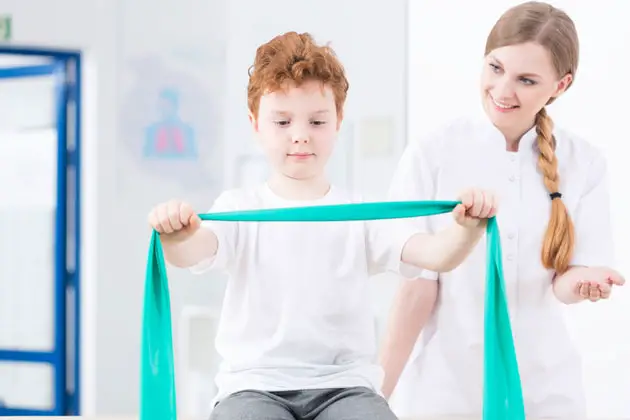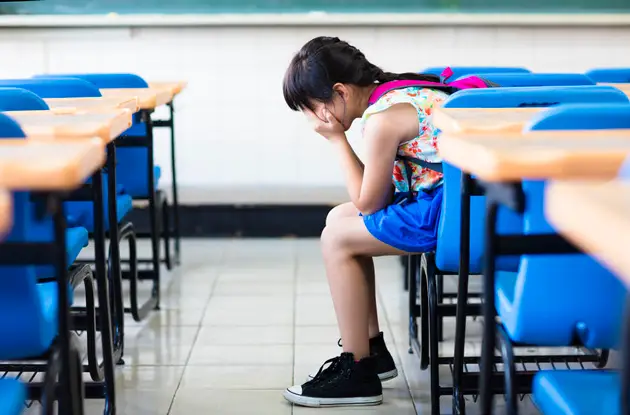Some of your child’s strangest behaviors and habits, explained by experts.
When my son was in kindergarten, the teacher called me in to tell me the staff was taking up a collection so that I could buy him new clothing. He’d been wearing the same clothes every day for two weeks, and the staff assumed it was because I was not able to properly clothe him. It took everything for me not to burst out laughing as I explained that my son decided he would wear only black pants and a favorite black sweatshirt—so I’d bought him five pairs of the same pants and sweatshirts and washed his clothes constantly. But I told him that it was the same outfit every day. When the teacher asked if he had other clothes, he apparently said no.
Don’t get me started on the phase in which he insisted on wearing his Superman cape to school. Or the stuffed cat that had to be with us as all times. Kids do weird things. Really weird things. We asked experts to comment on some of the unusual traits we are bound to see as our kids grow.
Weird Things Toddlers Do
Touching everything. If you feel like smudgy fingerprints cover every surface in your home, you’re not alone. “Many toddlers learn by touching,” says Mary Ellen Renna, M.D., a pediatrician in practice in Jericho and author of 10 Steps to Almost Perfect Parenting. “They are tactile learners. They need to touch, manipulate, open, tear, and pull items. They need to see what sounds they make, how they feel, what it tastes like.”
Eating and licking gross things. Toddlers do not discriminate when it comes to putting things in their mouths or up to their lips—dirt and snot included. “Children are inherently curious,” says Deena Blanchard, M.D., a Brooklyn- and Manhattan-based pediatric and postpartum depression expert with Premier Pediatrics and a mom of three boys. “As they grow and explore the world they will explore with all their senses. Early exploration is often oral in nature.” That’s why parents have to make sure there are no small pieces of things on the floor or within grasp. “The good news is that as children get older these habits fade,” Dr. Blanchard says.
Flushing stuff down the toilet. Remember that time when you couldn’t find a toy or your sunglasses, and then you heard a splash? “Kids are attracted to the toilet more between ages 18 months and 2½ years, when they are developing their bathroom skills—toilet training,” Dr. Renna says. “Once they develop the aversion to their waste products, they don’t play around the toilet as much.”
Taking over cellphones. Phones and other mobile devices are very attractive because they are filled with colors and sounds, Dr. Renna says. “They also have games and songs that are entertaining.” That doesn’t mean they should play with them. “I don’t believe kids should have access to a parent’s phone,” she says. “Too much potential danger there.”
RELATED: Find Behavior Specialists Near You
Weird Things Small Children Do
Sticking things up their noses—and elsewhere. Kids are usually led by the desire to see how things fit into other things. “It is rare for children to put things in various places to act out or purposely annoy their parents,” Dr. Blanchard says. “It is much more likely that they are curious about what it would feel like to put a pretzel in their nose, or if a bead could fit inside their ear.” She says to talk to children about how their bodily orifices work and explain, We only put food in our mouths and that it’s not healthy or safe for your body to put things in your nose or ear. Most children grow out of these behaviors by age 5 or 6, or after they have to see a doctor to have something removed from an ear or nose. “It’s not actually a fun experience and that works in our favor as parents,” Dr. Blanchard says.
Peeing on, or in, stuff. While dogs do it to mark their territory, kids do it to experiment and explore. “I know a 4-year-old who urinated in a backpack because he wanted to see what it felt like,” Dr. Blanchard says. To make sure it doesn’t happen again, focus on the positive and make it a teachable moment. “For example,” she says, “you can say, ‘I sometimes wonder what things may feel like too. It is important to only go pee in the potty or your pull up so we can keep the house clean.’” Also, tell children to check with you if they aren’t sure about whether they should do something.
Clinging to an object of affection. Linus isn’t the only one who likes his security blanket. “The object in some way represents the parent who the child does not want to separate from,” says Gail Saltz, Ph.D., an associate professor of psychiatry at The New York Presbyterian Hospital Weill-Cornel School of Medicine and host of “The Power of Different” podcast. “The parent can come and go, so the object provides comfort and permanence in staying with the child and being snuggled or held.” Termed a transitional object, it can be a blanket, a stuffed animal, or toy—something that can be carried around. “Parents know if you leave it at home or it gets lost, there is hell to pay in the form of tantrums or refusal to go anywhere without it,” Dr. Saltz says.
Making animal noises and sounds. There are a number of things that inspire kids to roar, purr, or make odd or loud noises. “It may be dramatic play, actually pretending to be an animal,” says Jephtha Tausig-Edwards, Ph.D., a New York City-based clinical psychologist. “It would not be unusual for a 3- or 4-year-old to pretend he or she was an animal until they tired of doing so.” It can also be to gain attention, or to make parents or peers laugh, she adds.
Inviting imaginary friends to dinner. Imaginary friends can be helpful to kids who have gone through trauma and can serve as allies to any child. “These friends are sometimes only in the child’s head but can sometimes be seen in great detail by the child,” Dr. Saltz says. “It may be one or multiple people, animals, or fantasy beings and is often viewed in a real friend way, with discussion, shared feelings, and inclusion in family activities.” This is all a reflection of this child’s imagination and creativity, and is more likely to occur for a child who has enough unstructured play time to invent a friend, she says.
RELATED: Imaginary Friends 101
Stripping in public. “Young children can be unself-conscious about their bodies such that they may spontaneously strip off their clothing because they feel hot, or too restricted, or just like the feel of being naked—but obviously not when it’s cold out,” Dr. Tausig-Edwards says. “Sometimes, they may want to show the world their ‘big boy underpants’ or something they are proud of, which could also include genitalia if they feel this is important.” She says this behavior usually stops due to caregiver reprimands and/or pressure from peers in social situations such as birthday parties or playdates. It should clear up completely during the first year of preschool if not before.
Drawing a masterpiece on a freshly painted wall. Remember that time when your kids unleashed their inner Michelangelos in unsolicited wall murals—furniture, upholstery, and other items? “This behavior can be an expression of artistic impulses and/or a method of gaining our attention,” Dr. Tausig-Edwards says. Or kids just think it is a good idea at the time. She suggests hanging large sheets of butcher paper with masking or some other non-marking tape on all four corners and then invite your children to draw only on the paper. “You will know fairly quickly whether the driver of their behavior is more of an artistic impulse or more of an attention-getting one.”
Decorating a sibling’s face with magic markers. They’re not trying to ruin their sister or brother’s good looks out of jealousy. “It’s usually part of fun, curiosity, or an imagination game,” Dr. Blanchard says. “It’s rarely manipulative or purposefully intent on upsetting someone. Kids are fun, curious little beings. They aren’t yet fully aware of the consequences of their actions and likely have not thought it through.” While this may lead to some coloring on your baby, it also leads to a time where your child is super fun to play with and talk to, she says. “Their minds are open and the world is their oyster. Try to embrace this period and guide your child in making good choices.”
Weird Things Older Kids Do
Refusing to talk about their day at school. Some kids just need downtime when they get home. “As a mom of three boys, I totally understand the frustration of asking your child how was your day at school and getting back, ‘fine.’” Dr. Blanchard says. “After a long day at school kids may not be in the mood to talk or review their day.” Try asking your child more specific questions instead of broad ones, such as: What did you eat for lunch? Or, What made you smile today? Or wait until bedtime to chat, when kids are more relaxed.
Giving the pet a makeover. Some kids like to dress up pets like dolls and put barrettes on long-haired dogs, but Rachel Barrack, a veterinarian with Animal Acupuncture, has also seen cases of kids trying to add color. “Kids love to color with markers and crayons, but keep these away from your pets,” says Barrack, who practices in NYC. She says that body glitter and nail polish are also not safe.

Holding pets (or siblings) up like Simba. The sweet scene in the Lion King inspires kids to hold their pets up like a baby lion. However, Barrack says, “this is not only scary for them, but you can drop them.” That goes for little sister or brother, too. “We don’t want to encourage children to do any weird things with pets,” Barrack says, suggesting pet-friendly alternative activities such as cuddling, teaching and learning new tricks, exercise, reading, and “pet-friendly” arts and crafts.
Playing with prickly things. Some foods need close parental supervision. Naresh C. Rao, D.O., FAOASM, of Sports Medicine at Chelsea, shares a cautionary tale about a 9-year-old sister and 6-year-old brother who saw a prickly pear in a grocery store. “The sister picked it up, and it felt fuzzy. She then told her brother to pick it up,” he says. “After both of them held it, they felt pain and told mom.” As it turned out, he says, “The slivers from the Prickly Pear had to be removed by a pediatric dermatologist because the spikes were so small that the doctor needed specialized equipment to have it removed from their skin.”
Creating obstacle courses. Dr. Rao, who lives in Scarsdale and was on Team USA’s sports medicine team for the 2016 Summer Olympics, has treated injuries relating to kids playing around in cars. One 9-year-old boy decided to buckle all the seat belts in the back of Mom’s minivan and swing through them like an obstacle course. “He then convinced his 11-year-old sister to join him,” Dr. Rao says. “She got through one but then got caught up in the next one. It was so tightly wrapped around her body that the latching mechanism would not release.” The seat belt needed to be cut to free her.
RELATED: Get Our Weekend Planner in Your Inbox
Weird Things Tweens Do
Girls going gaga over male pop idols. It’s a rite of passage that harkens back beyond Elvis and the Beatles and the Backstreet Boys. “Teen idols are often fantasy romantic partners when tweens and teens first start to have crushes,” Dr. Saltz says. “It is a safe way to express and experience romantic and sexual feelings in an exciting way.” Teens and tweens feel close to the idol by going to concerts and playing their music, which explains why parents find themselves shelling out money for tickets, T-shirts, and posters. Because adolescent brains are more primed for risk taking and emotionality, a teen may go to great lengths to be close to and experience their idol, Dr. Saltz says.
Boys using potty humor. “Boys love potty humor—farts and poop jokes never get old—and that’s why they will read a series like Captain Underpants over and over again,” says Hillary Tubin, former literacy educator and author of Boys and Books: What You Need to Know. “Boys also love to read in the weirdest positions: standing, squeezed into a tiny space, in a fort, on their backs with their arms raised and the book high in the air, and while moving around to name a few.” She says boys are the happiest when they get to read a book such as Captain Underpants squeezed into a tiny space made into a fort, with a flashlight in hand and their favorite pet close by.
Being tied to electronic devices. The romance begins early on and by the time kids have cellphones and iPads they might as well have been born with the device firmly attached to their hand. Texting is how teens communicate. “We live in a world of constant motion and as such they grab anything to keep constantly busy,” says technology expert Donna Conroy, co-founder of House Monkey. Always monitor use, she says, and get kids to take a time-out from devices as much as possible.
RELATED: How to Handle Your Child’s First Crush





















